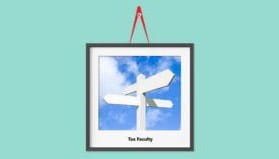In September 2024, ICAEW and other professional bodies met with HMRC to discuss improvements that could be made to HMRC’s guidance on capital allowances. Following the meeting, ICAEW set out its recommendations to HMRC in Representation 72/24. HMRC has now made some initial changes to its guidance, including in the areas set out below.
Meaning of “unused and not second-hand"
It is a condition of the 100% FYA for main rate expenditure (referred to as “full-expensing”) and the 50% FYA for special rate expenditure that the plant and machinery is new and unused (s45S, Capital Allowances Act 2001). CA23174AB has been updated to include guidance and an example explaining that:
- where expenditure is incurred on upgrading or improving an existing asset by adding new parts, the expenditure may qualify for full expensing/the 50% FYA;
- where new and unused parts are combined with used or second-hand parts to create a new asset, only the expenditure incurred on the new and unused parts may qualify for full expensing/the 50% FYA; and
- where a new asset includes a used asset that has been recycled (ie, “broken down into its raw components and reformed into, or as part of, something new”), the new asset will be unused and not second-hand for these purposes.
Example from HMRC
“Hunter and Ball Ltd operate a stone crushing machine as part of its construction business. On 1 April 2025 and in response to increased demand, it installs upgraded new and unused liners, jaws and impact plates to improve crushing efficiency and throughput. The new parts are added to the existing machine. The cost of providing the new parts is capital expenditure because they have improved and upgraded the existing machine. In its accounting period ending 31 December 2025 the company will be able to claim full expensing in respect of this expenditure.”
In addition, a paragraph has been added to CA23174AB to clarify HMRC’s position on full expensing/the 50% FYA and expenditure incurred on new software and improvements to existing software.
CA23174AB:
Other changes
- Meaning of “chattel” and “fixture”. CA26025 now includes lists of items that HMRC would not normally regard as chattels/fixtures (current version; version prior to update).
- Election to fix the value of fixtures on the sale of an interest in land. An example has been added to CA26850 to help explain the information that should be included in the election (current version; version prior to update).
- Real estate investment trusts (REITs). IFM24010 has been updated to include guidance for REITs on the availability of FYAs (including full expensing) and the annual investment allowance (current version; version prior to update).
- Long life assets. CA23700 has been expanded and restructured into three pages (CA23700-CA23722) and now includes additional guidance, and an example, on how to determine the useful economic life of an asset (current version; version prior to update).
HMRC has also added guidance on the implications for capital allowances of the repeal of the tax rules for furnished holiday lettings (FHLs) from April 2025, at CA20025.
More changes to come
HMRC will continue to consider how its guidance could be improved in the following areas:
- leasing;
- the entitlement of employees and office holders to capital allowances;
- the meaning of “plant”; and
- contributions to expenditure.
HMRC has ruled out making changes to its guidance on the meaning of “on the provision” in the short term due to ongoing litigation (eg, Orsted West of Duddon Sands (UK) Limited & Ors v HMRC [2025] EWCA Civ 279).
Latest on business tax
The Tax Faculty
ICAEW's Tax Faculty is recognised internationally as a leading authority and source of expertise on taxation. The faculty is the voice of tax for ICAEW, responsible for all submissions to the tax authorities. Join the Faculty for expert guidance and support enabling you to provide the best advice on tax to your clients or business.



